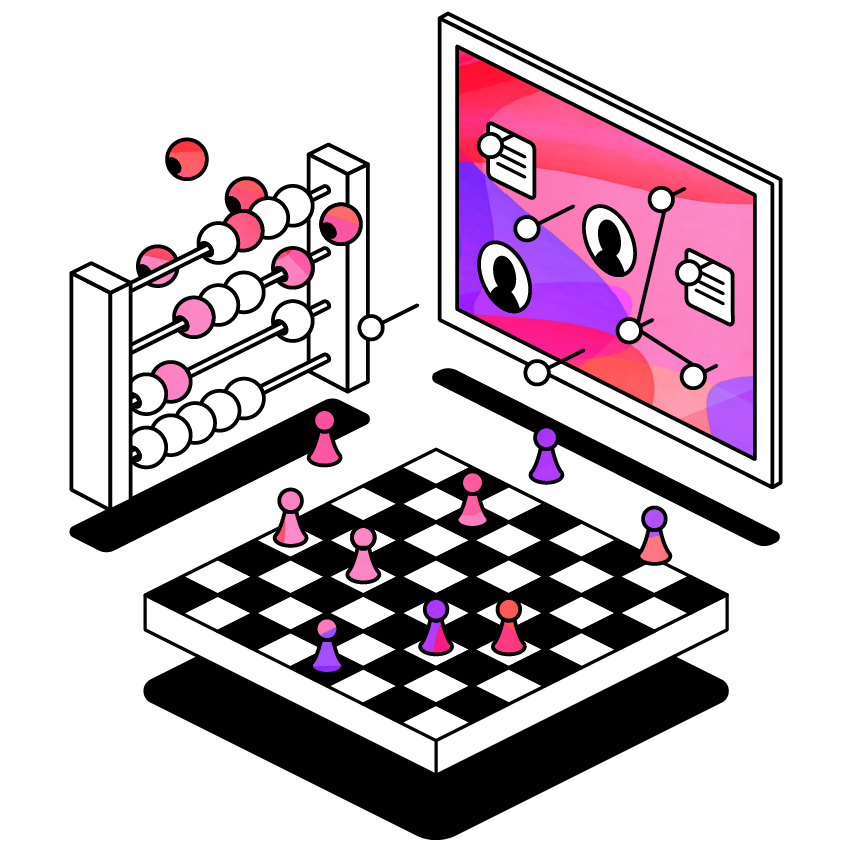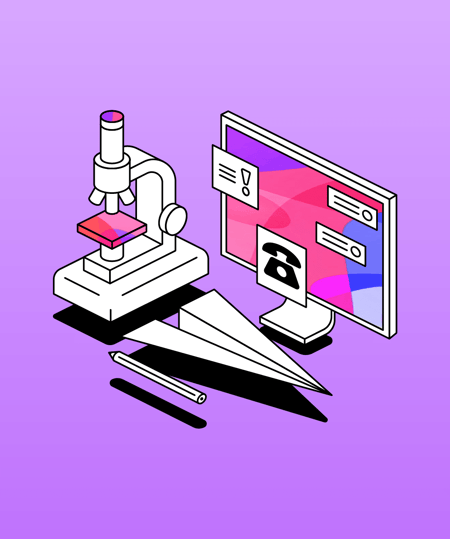Disability, Assistive Technology & Higher Education - myths, facts & stats
Disabled college students have a significantly different education experience compared to their peers. To shed some light on the complex situation facing disability, assistive technology and higher education, we've dived into the data to dispel the myths and set clear the facts and stats that impact disabled college students, today.
 4 min read
4 min read
 Published: 22 Mar 2024
Published: 22 Mar 2024
 Jacob Goodwin
Jacob Goodwin


Among learners and educators alike, there are significant ongoing conversations taking place around disabilities in higher education. Particularly on the volume of students requiring support, pressures on Disability Services departments to deliver and the role of assistive technology for accommodations.
But when it comes to the provision and type of support, are individuals making the best informed decisions? Or, rather than diving into the data, are they instead forced into sweeping choices without having the capacity to understand, and act on, the nuances of disability.
College students with disabilities do not have a unanimous experience. There are so many unique factors at play that affect their education.
To help shed some light on the complex situation facing disability, assistive technology and higher education, we at Glean have compiled the available information, to dispel the myths and set clear the facts and stats that impact disabled college students, today.
College enrolment
Starting from the very beginning, disabled students are often put at a disadvantage compared to their peers. Whether that be internalised perceptions, or direct discrimination.
Nearly 1 in 5 undergraduate college students reported having a disability in 2019-20. Shockingly however, according to the National Center for Education Statistics, only one-third of those students actually informed their college.
Additionally, a Mental Health America survey of 471 college students found that 70% of students with mental health disabilities didn't register for accommodations from their school.
These students reported not believing they were sick enough (41%), not knowing accommodations existed (33%), and being afraid to talk to professors about accommodations (26%) as the reasons behind this.
Attitudes & inclusion
Evidently, colleges can do better when it comes to creating an inclusive environment.
If students don’t feel comfortable in coming forward to disclose their disability, any assistance that does exist is rendered redundant.
In a peer-reviewed 2022 study, researchers graded 50 top-funded undergraduate programs on an A-F letter scale measuring accessibility, accommodations, and reputation for inclusion.
6% received an A, 60% received a D.
It is easy therefore to see how disabled students are less likely to feel a sense of belonging and be more susceptible to discrimination.
A 2021 research brief published by the National Center for College Students With Disabilities analyzed survey data from 54,000 students.
Their analysis showed that compared to peers without disabilities, students with disabilities had a significantly lower sense of belonging at their schools. They also reported higher rates of discrimination on campus.
Common disabilities
Perhaps these attitudes are down to a lack of understanding, and knowledge around exactly what disabilities are found across campus.
In 2022, the American College Health Association (ACHA) surveyed 54,000 undergraduates. It found:
- 15% of students reported having attention-deficit/hyperactivity disorder (ADD or ADHD).
- 5% had a learning disability.
- 4% were blind or had low vision.
- 3% were autistic.
- 2% were Deaf or hard of hearing.
- ~1% had a mobility or dexterity disability.
- ~1% had a speech or language disability.
Likewise, according to The Yale Center for Dyslexia and Creativity, dyslexia makes up 80-90% of all learning disabilities and affects 20% of the population.
Assistive Technology (AT)
When it comes to providing accommodations, there is evidently both a need to educate the whole student population on what is available, whilst simultaneously having specific solutions for a wide range of use cases.
Over recent years, as the world has been increasingly digital, assistive technologies have emerged as a stable string to the accommodation bow.
2024 research from the US Department of Education explored not only the importance of Assistive Technology (AT), but also, the importance of its use throughout a student's educational lifecycle.
They found that “the AT needs of a child with a disability do not necessarily stop when they transition out of high school.” In other words, colleges must be proactively engaging with their communities to support the compulsory creation of a transition plan for children turning 16 in line with their post-secondary goals.
In addition, “research has demonstrated positive outcomes for individuals with disabilities, including:
- Increased postsecondary education enrolment
- Improved post-secondary academic outcomes
- Positive vocational outcomes
- Improved independent living skills, while engaging with others at school, home, their community, and eventually, post-school.
In short, the use of AT devices and services supports children with disabilities and can lessen the impacts of a child’s disability.
AI adoption
As with any current conversation around innovation, AI is increasingly making its presence known. The world of higher education is no different.
There are countless conflicting opinions on its place within learning, but what cannot be debated, is the increase in its usage. A 2023 study by Anthology found that:
- 24% of students believe AI will help personalise learning experiences.
- 46% of students believe it will help interactivity.
- 26% of students believe it will help with efficiency.
- Only 26% of US students report using AI tools frequently or occasionally, compared to 54% in the United Arab Emirates and 49% in Singapore (49%).
Likewise, Best Colleges found that 56% of college students have used AI on assignments or exams whilst 79% say they have had an instructor talk to them about the use and ethics of AI in the classroom.
Graduation rates
Irrespective of opinions on the place of technology in the classroom, the underlying facts remain that educational institutions have a long way to go to provide equity for disabled students.
On the most telling data point of all, graduation rates, the gulf in data is astonishing.
Among students served under the Individuals with Disabilities Education Act who left high school in 2019-2020:
- 72% graduated with a diploma.
- 10% received an alternative certificate.
- 16% dropped out.
This is compared to the high school graduation rate among all 18-24-year-olds of 94% in 2019, according to NCES.
The story is much the same in higher education. 49% of students with disabilities, enrolled at a four-year college in 2011, completed a bachelor's degree within six years versus roughly 68% of students without disabilities.
Similarly, according to the 2023 Annual Disability Statistics Compendium report, nearly 20% of 25-34-year-olds with a disability had a bachelor's degree or higher compared to 41% of those without a disability.
The news however is not all bad as the percentage of people with disabilities earning a bachelor's degree doubled between 2008 and 2021.
To find out more about how you can support everyone across your institution, click the link below and explore how Glean empowers students to become successful, independent learners.
More from Disability Services
View All
 4 min read
4 min read
Navigating budget restrictions: a comprehensive guide to maximizing departmental resources
Higher education professionals face increasing pressure to do more with less and maximize limited resources. In this article, we explore tips, strategies, and success stories for adopting assistive technology and effectively planning budgets.

 2 min read
2 min read
The power of inclusive language and technology
In a recent webinar, Leslie Smith, Manager of the Access Center at Volunteer State Community College, shared a powerful insight into the transformative impact of language and technology.

 3 min read
3 min read
The future of disability services in higher education
Disability services are experiencing significant change. To explore this, and how they may continue to evolve, we sat down with Christa Price, Assistive Technology Specialist at California State University, Northridge, and Aaron Holmes, Access Specialist at MiraCosta College.





